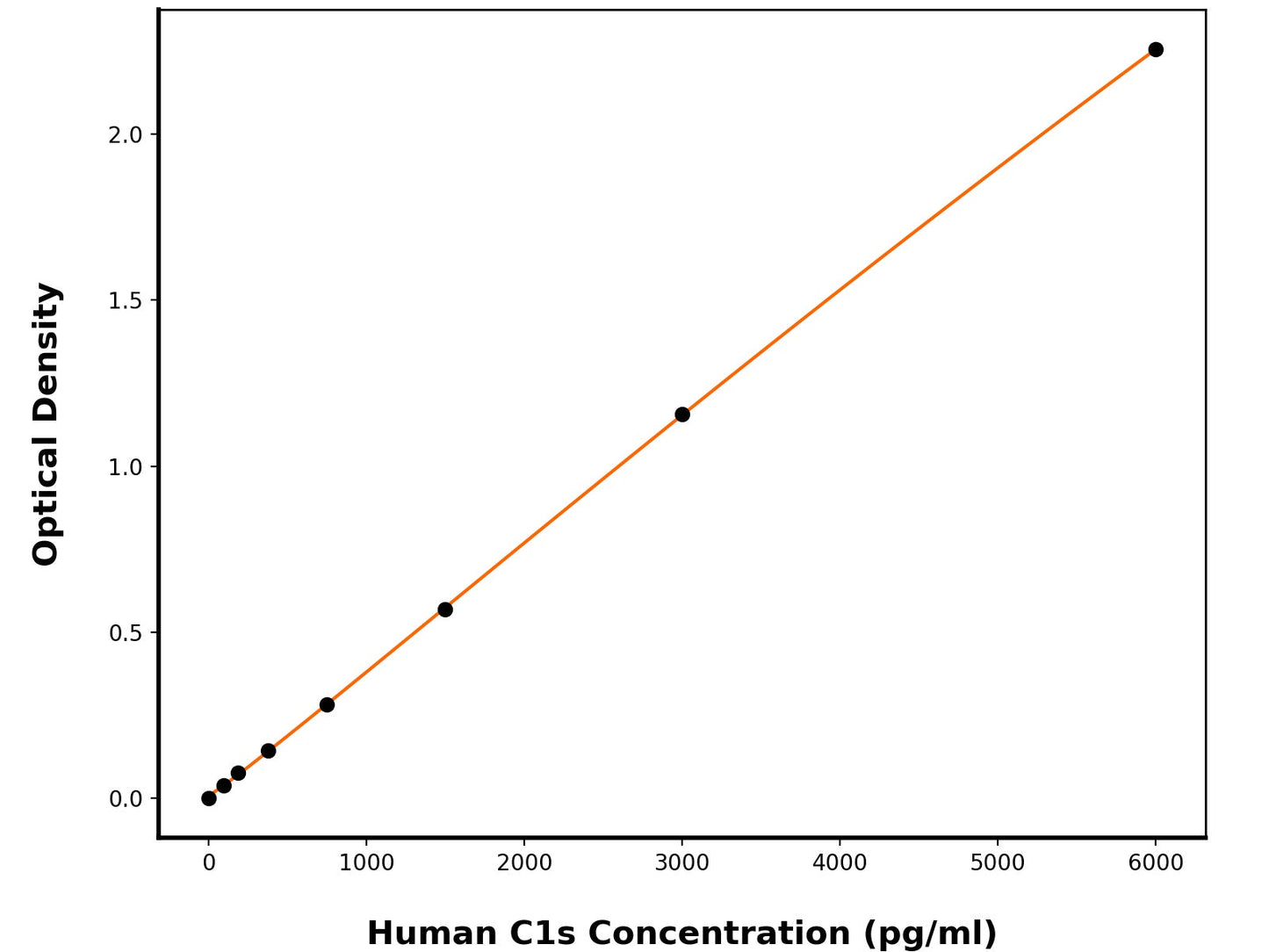1
/
of
1
Human Complement C1S Subcomponent (C1S) ELISA Kit
Human Complement C1S Subcomponent (C1S) ELISA Kit
This ELISA kit is designed to detect Human Complement C1S Subcomponent (Human C1S). The assay plate has been pre-coated with mouse anti-Human C1s monoclonal antibody. When the sample containing C1s is added to the plate, it binds to the antibodies coated on the wells. Then, a horseradish peroxidase conjugated mouse anti-Human C1s Antibody is added to the wells and binds to C1s in the sample. After washing the wells, substrate solutions are added, and the color intensity is directly proportional to the amount of Human C1s present. The reaction is stopped by adding an acidic stop solution, and the absorbance is measured at 450 nm.
Catalog No:
BPE049
Regular price
$754.00 USD
Regular price
$580.00 USD
Sale price
$754.00 USD
Unit price
/
per
2 weeks
Couldn't load pickup availability
Product Details
Species Reactivity
Human
Sensitivity
41.48 pg/mL
Detection Range
93.75-6000 pg/mL
Sample Type
Serum, plasma, cell culture supernates
Incubation(s)
3.5 hour(s)
Research Areas
Immunology
Background
Complement is an integral component of the adaptive and innate immune systems and represents one of the major effector systems for the immune responses. The classical complement pathway is triggered by C1, a complex composed of the binding protein C1q and two proenzymes, C1r and C1s. Upon binding of IgG to the head of C1q, C1r undergoes autoactivation and in turn cleaves and activates C1s. C1r and C1s, the proteases responsible for activation and proteolytic activity of the C1 complex of complement, share similar overall structural organizations featuring five nonenzymic protein modules (two CUB modules surrounding a single EGF module, and a pair of CCP modules) followed by a serine protease domain. Besides highly specific proteolytic activities, both proteases exhibit interaction properties associated with their N-terminal regions. In contrast, C1r and C1s widely differ from each other by their glycosylation patterns: both proteins contain Asn-linked carbohydrates, but four glycosylation sites are present on C1r, and only two on C1s. As a highly specific serine protease, C1s executes the catalytic function of the C1 complex: the cleavage of C4 and C2, and thus instigates a sequence of activation steps of other components of the complement system, culminating in the formation of the membrane attack complex which induces cell lysis. Like other complement serine proteases C1s has restricted substrate specificity and it is engaged into specific interactions with other subcomponents of the complement system. The only other protein known to interact with C1s physiologically is SerpinC1, an inhibitor of serine protease, which inhibits C1s activity and thus plays a regulatory role in controlling the function of C1s enzyme.
Shipping Condition
Shipped on cold gel packs.
Storage Condition and Shelf Life
This product can be stored at 2-8C.
Analyte
Complement C1s subcomponent
Regulatory Status
For Research Use Only

